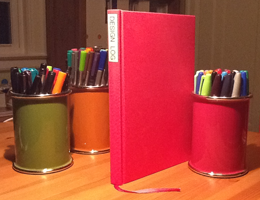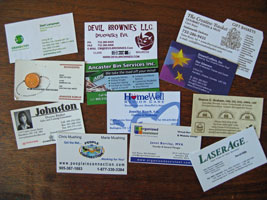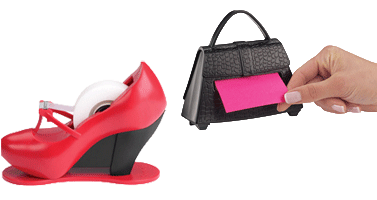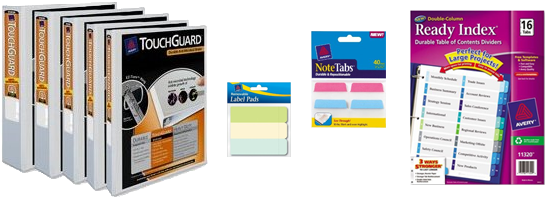Taking Your Organizing Product to Market – Four steps to get started
This page may contain links to Amazon.com or other sites from which I may receive commission on purchases you make after clicking on such links. Read my full Disclosure Policy

I am especially pleased to introduce today’s guest blogger, Clare Kumar, who is one of my clients and one of the few Professional Organizers Blog Carnival Star Bloggers I’ve had the pleasure of meeting in person. I’ve invited Clare to share her experience as a product developer and professional organizer.

As a professional organizer I problem solve daily as part of the job. Often there is an obvious way to address a particular dilemma with available products or systems. Other times, I simply wish there was a solution that existed. From time to time, I invent a solution.
Even before I was an organizer, I’d come up with ideas for products that would neatly address a challenge. For example, I thought it would be helpful to have eyeglasses with one side that flips down so you can apply makeup with ease. How about plastic bag holders to protect hands while carrying a heavy load, or a light that slowly brightens in the morning to soften your waking moments and counter the effects of Seasonal Affective Disorder? I ended up seeing every one of these in market.
All of these ideas came to mind clearly, and I could even visualize them, but I did nothing to bring them to market. Yes, a good idea is a brilliant thing, but is only the seed. And it takes a lot of seeds to turn into a few well-developed trees. Having worked for the past almost three years on bringing a product to market, I have healthy respect for any product that actually ends up in the marketplace. It takes a tremendous amount of work and determination, and often even a bit of luck.
If you’ve got an idea you’re thinking ought to be “out there”, here are four things you can do:
Write it down
Begin documenting the idea in an Inventor’s Log Book. Here you will use words and pictures to describe your idea. It is important to date each entry. There are guidelines on how to choose and maintain an Inventor’s log book, and resources which can help make sure you’re doing it properly. In countries where patents are granted on a first-to-invent versus a first-to-file basis, this document could be critical to proving you are the inventor. In any case, it is good practice to make sure you don’t lose a good idea!
Determine if there is a market need
For a product to be successful there has to be a market for it. With the internet, it’s easier than ever to reach niche markets, upping the ability to reach those markets. But how do you know if there is demand for your product? It feels very risky to talk about a new idea, but you won’t find out if there is a market for it without asking a few folks what they think.
Prepare non-disclosure forms for your test market to sign and do have them sign it. It may protect your ‘investment’ in the future if you decide to pursue creating intellectual property.
Listen to feedback
Stay open minded to what people tell you about your product. It’s hard to do when you think you have something fantastic, but if you listen, you may find ways to improve your product. Your idea may not be for everyone, and that’s okay. This process may help you define your target market, too. Remember, a “not interested” or “don’t like x or y” could be more helpful than an “I love it”.
Figure out if there is a business
Your idea may be ingenious but if it is too expensive to produce or to ship to its market, then there is no sustainable business. You will want to determine how much it will cost to produce at a range of volumes, and see if, even at low volumes, people will pay enough to generate a profit for all the parties involved, including manufacturers, distributors and marketers. If not profitable, consider redesigning to reduce costs, or working on your next idea.
Disclaimer: The information provided here is for general purposes only and is not a substitute for legal counsel of financial advice. It is the responsibility of the reader to verify any legal information with an attorney.











I love the idea of the Inventor’s Log Book – it doesn’t necessarily have to be a new invention – but any business idea or new program that strikes you. Keeping your track of your ideas is such a powerful tool, especially if you get ideas at 4 AM! You can put them aside if the timing isn’t right and come back to them when you are ready for a new angle. Sometimes it helps just to get the idea out of you head so you can focus on the immediate tasks. Decluttering for your mind 🙂
Julie, I used to have an Ideas Book, but it wasn’t an effective tool for me. Maybe it would have helped if I’d scheduled a regular time to review my ideas and choose one to act on.